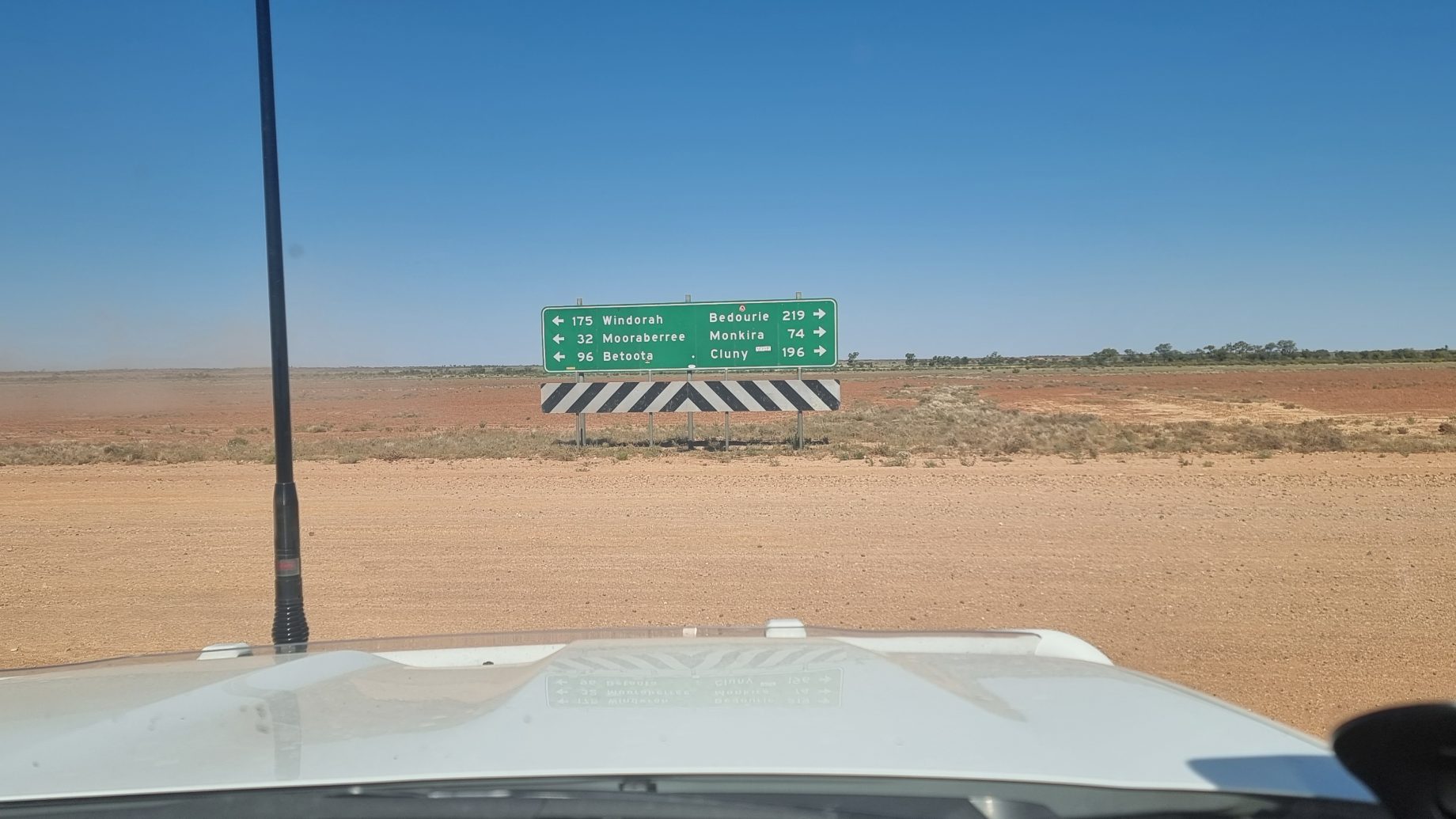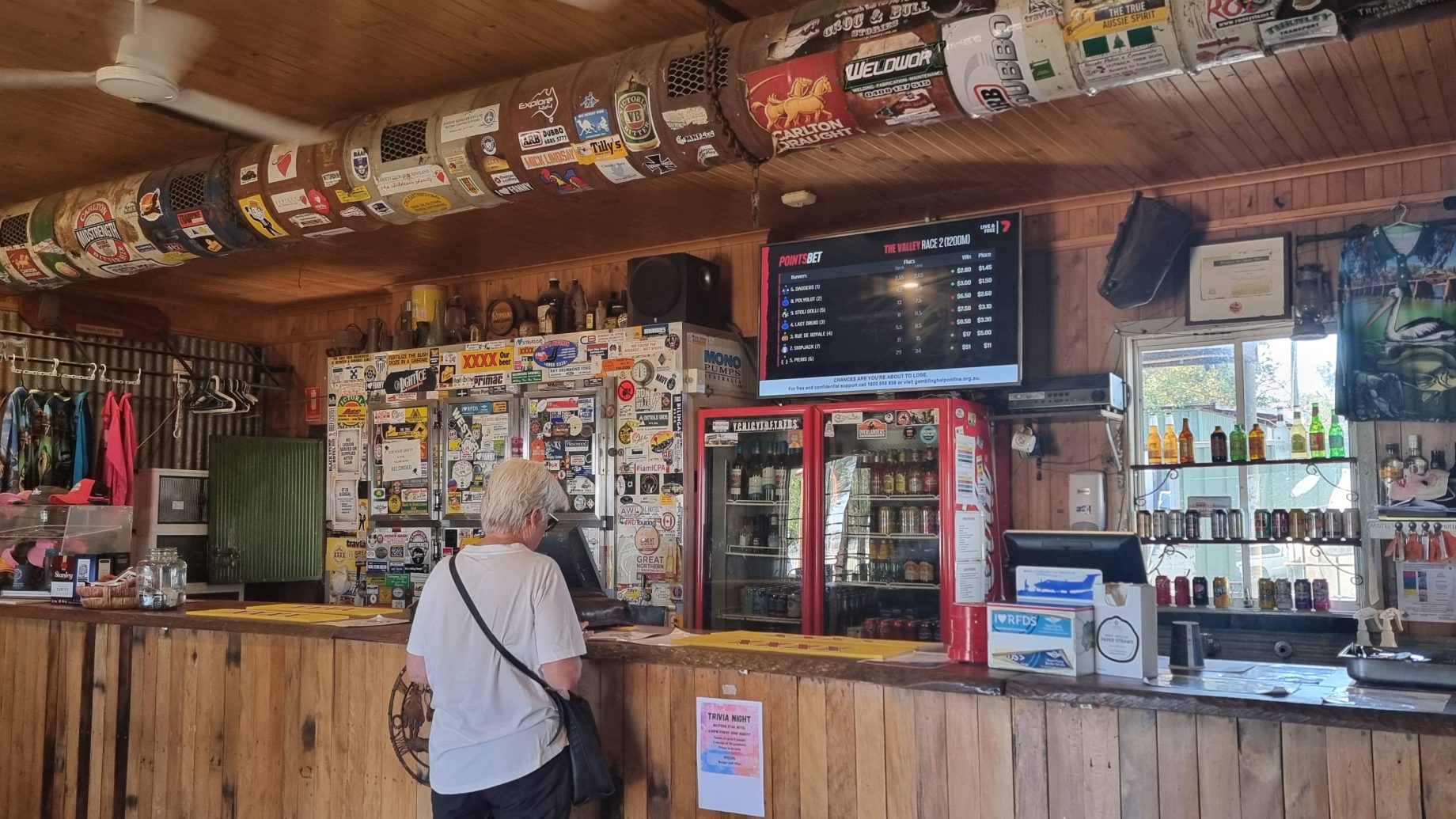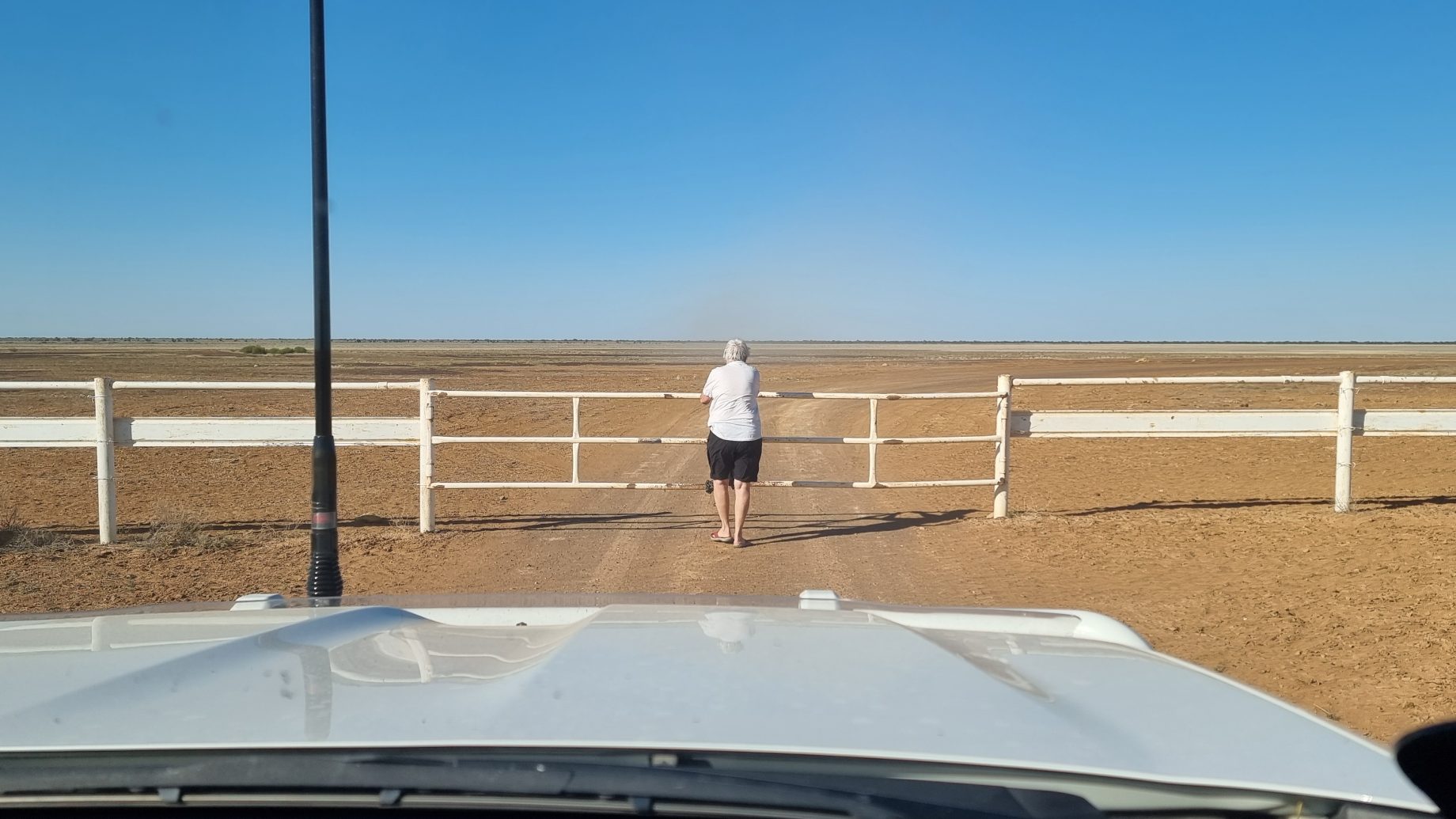Dawn at Hunters Gorge campground had the pelicans up and about, seeking breakfast in the opaque waters of the Diamantina River. Early morning is always a special time, here even more so as it is refreshingly cool and the bush flies don’t become active until the sun gets higher in the sky.
Breakfast was enjoyed while watching the pelicans and darters fight over anything edible. It wasn’t clear what they were eating but it was obviously worth fighting for. The flies were just getting active when we climbed aboard the Prado and set off through the National Park, with our destination for the day being Windorah to the south-east.
The channel country is flat – very flat. It is criss-crossed by gullies that make up an extensive network of dry creeks and rivers. It is easy to spot where the next dry creek or river is, as it will be home to bushes and trees that draw on underground water below the surface of the dusty creek bed. The two main systems that channel water towards Lake Eyre are the Diamantina River and Cooper Creek.
On leaving the campground we had to cross the Diamantina River and we can confirm that it has stopped flowing. It is now a network of diminishing billabongs that may dry up completely by the end of summer.
It was quite a drive through the park, with numerous dry creek crossings between lengthy stretches of (increasingly green) ground cover suggesting recent rain had fallen. A well-fed dingo crossed our path and continued on to find its next meal. Two brolgas pranced away from the track we were on. Another dingo, which was predominantly black, ran beside a fence to our left – it seems as though there may have been some wild dog in the gene pool. A bustard strutted it’s stuff before moving out of sight behind some bushes. Bustards only rarely fly as they are so heavily built and taking flight expends so much energy – they are more likely to run away. They stand about a metre tall.

On exiting the National Park we followed cattle station tracks through a number of large properties. The cattle on one property had us intrigued – when they spotted our vehicle they would stop whatever they were doing and trot towards us. This happened one more than one occasion; all we could guess is that the cattle may receive feed from a similar vehicle and this is what they expected from us. Getting 10 or so confused cattle to move away so we could pass was tricky.
Our cross-country drive through the Diamantina National Park and surrounding stations came to an end when we turned onto the Diamantina Developmental Road into Windorah, about 170 kms to the east.

Red-topped sand dunes were running parallel to the road in Windorah, reminding us we were still in harsh desert country. After nearly 4 hours of driving we spotted our first vehicle for the day! A few more followed, but all up we possibly saw only 8 vehicles over the space of the entire day.
Windorah is a small outpost deep in the Queensland outback. Their information board near the pub in town gave a good summary of the town’s history, as well as some interesting facts.

We refuelled at $2.53 / ltr for diesel at the general store before crossing over to the pub for a coffee. The ceiling fans were working overtime in the mid-thirties heat. They probably also helped to keep the flies out, as the doors and windows were all open.

Five kilometres to the east of Windorah is the Cooper Creek. A lengthy, single-lane steel bridge spans the creek (which is currently a collection of parallel creeks through a flood plain). The central creek is about 30 metres wide, with the current water about 15 metres below the flood plain. It doesn’t look to be flowing now, but remains as a large body of water in a normally parched landscape. There are far fewer birds here than there were on the Diamantina River where we stopped yesterday.
Our camp for the night is on the eastern bank of Coopers Creek. This creek is part of Australian history, as it is where the remains of the ill-fated Burke & Wills expedition came to an untimely end in 1861, further downstream near Innaminka.

The day has cooled down. The flies have retired for the day. The sun has set over Coopers Creek and we have gazed at the night sky before retiring for the day.

